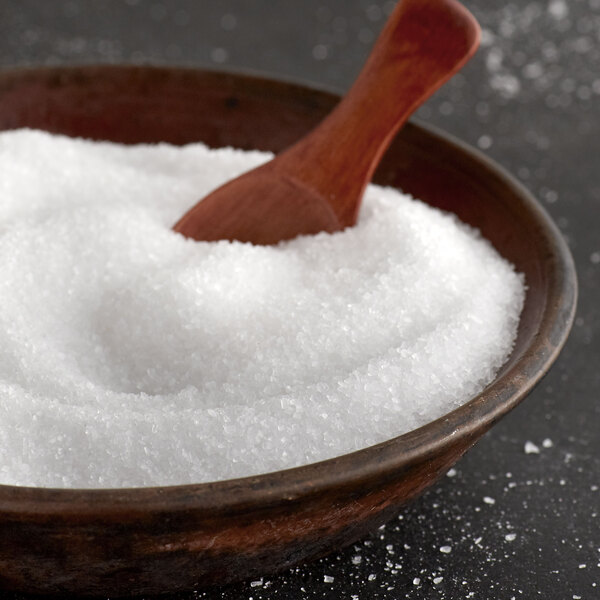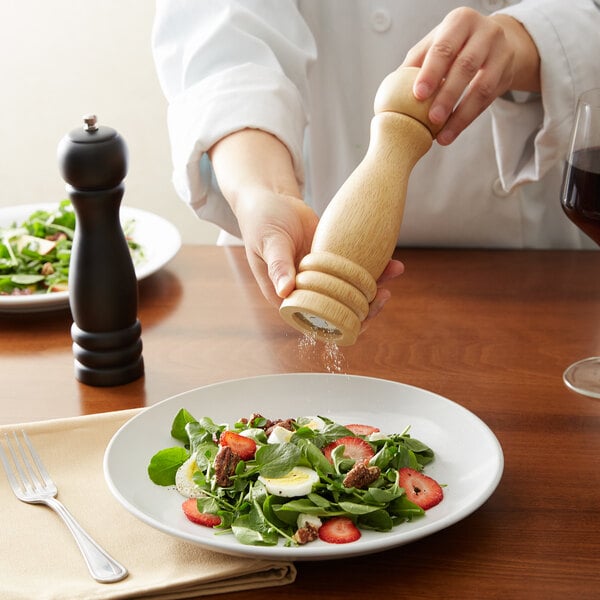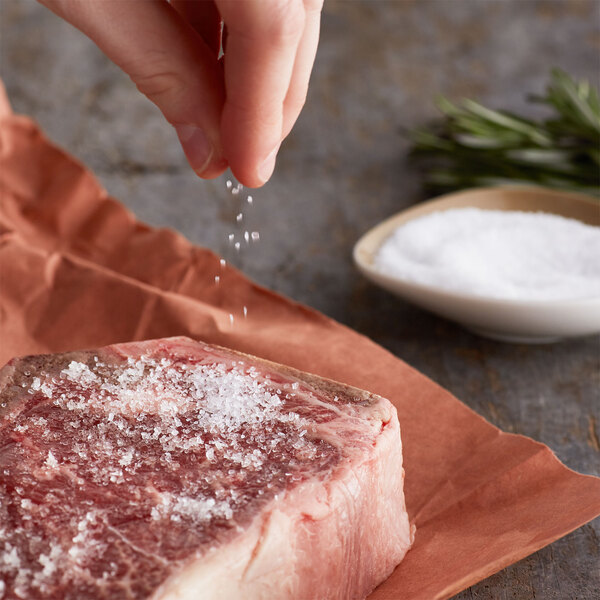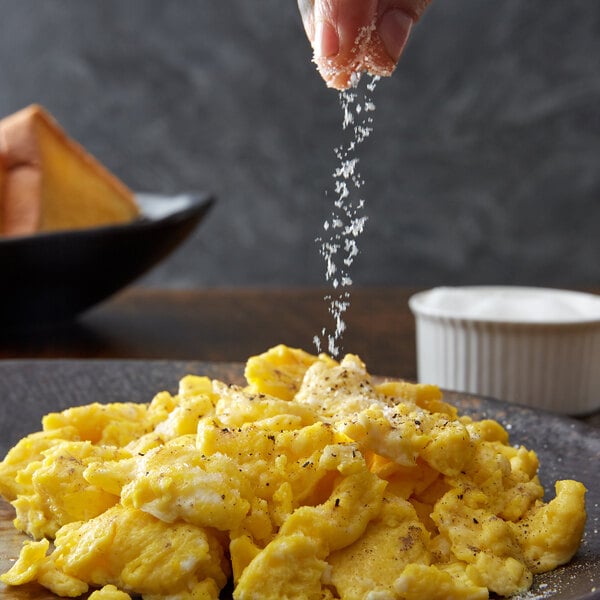How to Cut Saltiness & Fix Salty Food
Oversalting a meal is a chef's worst nightmare. Imagine seasoning a dish, only to have the cap come lose and pour salt on your main entree. If you have ever experienced the blunder of oversalting your dish while preparing a meal for a crowd, you may have found yourself desperately searching for ways to neutralize salt in food. Below we have created a list of the top ways to counteract too much salt in food so that your dish can be suitable for serving.
How to Make Something Less Salty
As a cook, it is never pleasant to find out that you added too much salt to a meal you were planning to serve to guests or customers. Keep reading to learn how to fix over salted food and find out which tip works best to remedy your salty dish.
1. Increase the Recipe


If you find that you over seasoned food and have extra ingredients on hand, increase the portion size of your recipe to mellow out the salty flavor. To properly resize your recipe, try the following:
- Make a new batch of your recipe, then slowly add the oversalted batch until you have reached the desired flavor.
- Wilt some unseasoned leafy greens into the dish. Greens tend to take on existing flavors, helping you dilute the seasoning that was excessively added.
- Add mild vegetables such as broccoli or cauliflower. Veggies with little flavor of their own will absorb some of the flavor that exists in the dish.
Usually adding one additional ingredient is all you need to spread out the flavors and make your dish servable.
2. Dilute the Recipe
You can try diluting your recipe with water or broth as a way of reducing saltiness in a dish. Use the following tips to counteract salt with dilution:
- Pour in some cold water over your salty dish and bring the recipe to a simmer to reduce the overall liquid back to the desired level.
- Use a stock or unsalted broth to balance out the salinity of the dish. Be careful not to use salted broth or else it can make your dish saltier instead of mellowing it out.
- Add unsalted diced tomato to boost the liquid level of your dish. Tomatoes are mostly water and can help thin out the existing salt levels in a recipe.
When diluting a dish, be sure to add the liquid in increments and taste as you go. You may need to re-season your dish with ground herbs and fresh spices after diluting to maintain a balanced flavor profile.
3. Add Acid to Your Dish
Adding acidity to a recipe in moderation can help counterbalance saltiness in a meal. Try some of the following tips to salvage your recipe:
- Squeeze some lemon juice or orange juice over your dish. The sour flavor provides a new layer of complexity to the meal and should mellow out the salt.
- Drizzle in a mild vinegar like all-purpose vinegar, apple cider vinegar, or white wine vinegar to help mask the salt with acidity by distracting the taste buds.
- Sprinkle some citric acid in your dish. Citric acid is a solid ingredient so you can more easily control the portion than working with acidic liquids. By using citric acid, you won't need to introduce any additional liquid to your dish, giving you the consistency you desire.
Use moderation when adding acidity to balance salt. Too much acid can cause your dish to taste overly sour and destroy the delicate flavors you worked hard to create.
4. Mask the Flavor with Fat
Fat may not make your dish less salty but it acts as a taste bud barrier and coats the tongue so that the salty flavor appears to be less potent. The easiest way to add fat is with dairy products. Here are some fat additions you can try:
- Use heavy cream, cream cheese, or milk in dishes that already contain dairy (such as a cheesy soup) or can be complemented by dairy (like a tomato sauce). This will result in a richer and less salty sauce.
- Offer cream-based topping or sides for dishes that contain no dairy, such as sour cream for salty taco meat or potato salad made with mayonnaise for oversalted steak.
- Shred a mild soft cheese like mozzarella on top of your dish to mask the salt. Some sharp cheeses are naturally salty (i.e. cheddar or feta) and should be avoided for pairing with salty dishes.
- Mash in some avocados for a non-dairy fat option. The creaminess of the avocado will hide some of the salt while adding richness for your customers who may follow alternative diets.
5. Sprinkle in Some Sugar
You can often balance out overly salty foods with some sweetness. Sugar can help round out your flavors as savory and sweet compete with each other. Take these tips into consideration when balancing with sugar:
- Mix in a pinch of sugar at a time, tasting after each addition to ensure that your dish doesn’t take on too much sweetness.
- Ensure that the sugar is thoroughly incorporated so you don’t end up with pockets of saltiness in your dish.
You’ll find that many spice blends feature sugar to give them a complex but balanced flavor profile, making sugar a good option for saving your meal.
6. Soak It up with Starch
Some chefs suggest that adding a starchy ingredient to your dish can help absorb some salt. However, this tip is up for debate in the culinary world since the amount of absorption is often insignificant. Even though the jury is still out, you can try the following tips to soak up some salinity:
- Throw in a raw uncut and unpeeled potato into your salty dish. The potato is thought to pull some of the salt and distribute starch into the dish, diluting it further. Discard the potato once tender.
- Add some cooked and unseasoned rice, pasta, quinoa, or couscous to the dish. These ingredients typically take on the flavor of a recipe and can thin out the saltiness.
7. Underseason Your Sides


If saving your main entree is proving to be more difficult than expected, serve your dish with underseasoned sides to counter the saltiness. Here are some side options that can help you mask a salty main dish:
- Serve a salty protein with salt-less rice so that the rice can take on the seasoning of the main course.
- Offer some bland mashed potatoes to mask the potency of salt in your meat.
8. Wipe or Rinse the Salt Away
In the event of a loose salt cap, you may be able to wipe, dust, or rinse the extra salt away. If you have a salt pile on your food, attempt the tips below to minimize the damage:
- Use a spoon to scoop out as much salt as possible if it's in a dish like rice or soup.
- If on a solid surface like meat or vegetables, use a basting brush to sweep some of the salt away.
- Pat the surface with a wet paper towel. The wet surface might be able to pick up some salt granules.
- If the salt is on a piece of meat, rinse the meat under running water or soak the meat for an hour so the salt leaches into the water.
9. Serve Your Dish with Some Bubbly
If all else fails, provide your guests with a refreshing glass of bubbly with their meal. A fizzy drink can cleanse the palate and neutralize the salt that lingers on your tastebuds. Pair your dish with some of these drink options:
- Prosecco
- Champagne
- Sparkling Rose
- Seltzer Water
How to Fix Salty Soup
It can be quite off-putting to prepare your soup of the day only to find that it’s too salty. To counteract saltiness in soup, try the following suggestions:
- Slowly add some water or unsalted broth.
- Throw in some vegetables like celery, onion, white beans, cauliflower, or leeks.
- Add in some potatoes or pasta to the recipe.
- Increase the quantity of the main ingredient in the soup.
- Increase the fat content with more cream, butter, mild cheese, or olive oil.
- Sprinkle in a dash of sugar or simple syrup.
- Make a salt-less batch and stir in the salty soup to achieve a balanced batch.
How to Fix Salty Meat

A salty piece of steak can be rather off putting when your guest was expecting juicy, tender, and delicious meat. Save your guests from a salty surprise by using these tips to neutralize salt on meat:
- If you oversalted in the marinating process, dust the salt off with a basting brush or wet paper towel.
- Rinse oversalted uncooked meat under the faucet for a few seconds to get rid of some salt granules.
- If you discover the salinity during the cooking process, underseason any sauces or sides you plan on serving the meat with.
- Sprinkle a little sugar in the seasoning you plan to use on the meat.
- Melt a slab of unsalted butter on the meat.
- Serve the meat with a starchy side, such as rice, potatoes, or polenta.
- Add a cream-based sauce or side to increase the fat content.
How to Fix Salty Vegetables
Vegetables are often mild in flavor and can benefit from a sprinkling of salt, but what should you do if you sprinkle on too much salt? Here are some options to fix your salty veggies:
- Pair your vegetables with a mild cheese like mozzarella or ricotta cheese.
- Toss the veggies in an unsalted cream sauce to mask the salt.
- Use those vegetables in another dish that is unsalted and make a new batch of veggies for the dish you are serving.
Seasoning Tips to Prevent Too Much Salt

Although oversalting remedies can be helpful, they are not foolproof. Take the following measures to avoid a salty situation altogether:
- Use salt in moderation. Salt can always be added but it can be more challenging to reduce it once it is in the food.
- Taste as you go. Add a little bit of salt at each step of the recipes and taste your dish after each salt addition, that way you’ll know exactly when to stop salting the dish.
- Use kosher salt instead of table salt. Table salt is finer than kosher salt and it can be harder to determine how much you actually need.
- Modify the amount of salt used based on the other ingredients in your recipe. If you’re using salt-heavy ingredients like soy sauce, olives, pickles, or parmesan cheese, reduce the amount of salt you plan to use and season at the end if you feel you need more.
An oversalted dish doesn't have to be the death of the meal. Do what you can to prevent adding too much salt to your recipe, but in the event of a salty accident, try some of our cooking hacks to neutralize the salt and proceed with the meal without anyone noticing. Check with your guests to ensure your dish is alright and take notes for next time. If you accidentally added too much heat to your dish, check out our guide on fixing spicy food.



